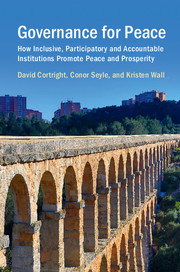 Governance for Peace
Governance for Peace Bibliography
Published online by Cambridge University Press: 08 September 2017
- Type
- Chapter
- Information
- Governance for PeaceHow Inclusive, Participatory and Accountable Institutions Promote Peace and Prosperity, pp. 267 - 279Publisher: Cambridge University PressPrint publication year: 2017
